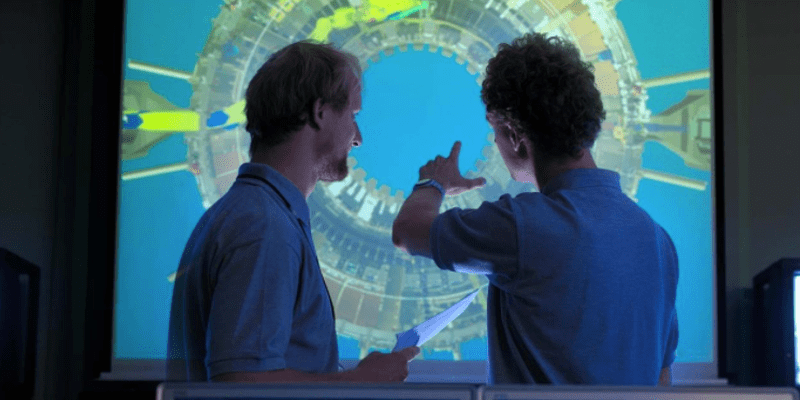How GE is leading the industrial marketplace in customer-centricity
As a part of the continuous history of a 124-year-old company, I’m constantly reminded of the massive technological changes that have occurred during this relatively microscopic blip of time in the grand scope of the human species. GE has already existed through two waves of Industrial Revolution, and we are now in the middle of a third.
We see fundamental changes happening on both the consumer and producer sides of the economy though digital transformation. Consumer buying patterns are changing—for example, you can configure and purchase a Tesla car completely online, and the car is serviced via software updates. In fact, 40% of today’s total economy is software! Digital innovation has been rising as a strategic business priority. It now has become a distinguishing hallmark of industry leaders.
How do you survive the Digital Industrial Revolution?
With the speed of technical innovation growing faster and new competitors rapidly entering the market, the options available to our customers are expanding—and the difficulties of switching suppliers are diminishing. Simple, fast service and customer centricity are necessities, not luxuries.
As you introduce cloud-based and Software-as-a-Service (SaaS) digital offerings, you need a deep and companywide focus on the digital vision. This requires fundamental organizational change and realignment across brands and departments. At GE, we intentionally created a startup-like environment to break out of our traditional silos and quicken our speed to market. We hired employees who brought deep expertise in SaaS, cloud, and outcomes-based selling. We invested in startups to infuse agility and a digital mindset into the greater organization.
Most importantly, physical businesses become digitally successful by driving customer-centricty. As economies continue to change, the customer relationship remains the most fundamental unit of business across all industries. If you stay close to your customer, you will always be relevant. That means really listening to and partnering with your customer base—which isn’t as easy as it sounds! It demands a deliberate, operational process. To create and close that feedback loop at scale, you will by necessity require technology and proven best practices. Customer-centricity is about aligning the vendor and the customer—both win or neither wins. The organizational structures, processes, and technology that make this happen is collectively called Customer Success.
Customer-centricity in the Digital Industrial Revolution
Let’s face it: Empathy? Delight? These concepts don’t always resonate with a quantitative, bottom-line-focused business strategy. So how can you forge an emotional connection in the sterilized world of massive multinational corporations? We can learn great lessons from customer-centric companies like Salesforce and Gainsight. Salesforce has always been focused on giving back, and it starts at the top. Marc Benioff starts his keynote at Dreamforce with updates on the company’s charitable efforts. Gainsight regularly engages at a personal level—I’ve heard they send gift baskets to folks who leave their company or are sick. This is a natural result when the customer relationship, outcomes, and experience are deeply valued and valuable.
In fact, customer-centricity has a measurable impact on growth. A 1-point increase in NPS results in a 4.5% increase in revenue.
Here are the Top 5 Best Practices We Recommend for Companies Adapting to the Digital Revolution:
- Enable Speed to Market
- Cultural Change across the company
- Educate your company on why retention matters for SaaS based business
- Build a Customer Success Organization
- Develop a Success framework, Tools and Process
- Voice of the Customer
Embrace a Start-Up culture. Remove silos between departments. Use agile principles and iterate quickly.
Customers first. Customer centricity will be the key differentiator in the subscription economy. Focus on solving for Happy Customers and a great customer experience.
Be the internal thought leader to educate all employees and drive the message that Customer Success is every employee’s responsibility.
Focus on customer retention and shorter time to value.
“Companies spend millions acquiring new customers, yet customer retention is what separates top performers from their competitors.” Make sure your company understands and believes this statement.
Embrace a proactive approach to driving end user adoption and outcome realization.
Listen to your customer! Customer loyalty increases when you listen to your customers. Make sure you demonstrate your leanings and act on them.
It’s clear that maintaining the status quo won’t work in today’s economy. Startups offering superior service and customer focus can rapidly eat away at market share. Netflix and Hulu are chipping away at cable TV. Uber and Lyft dominate the taxi trade. Amazon is upending traditional retailers. At GE Oil and Gas Digital, our ultimate macro-level goal is to instill a customer-centric mindset across the company to preemptively respond to these seismic changes. That means being intensely focused on the customers’ success—in both outcomes AND experience.


